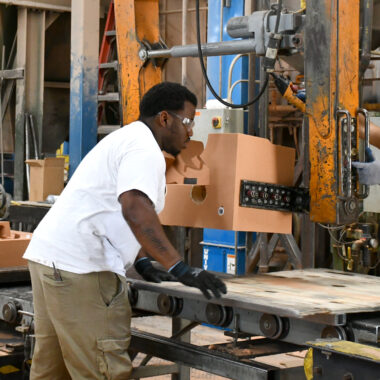Advancement Unleashed: Developments About Aluminum Casting
Advancement Unleashed: Developments About Aluminum Casting
Blog Article
Opening the Potential of Aluminum Casting: Proven Approaches for Success
Light weight aluminum casting has actually long been recognized for its adaptability and prevalent applications across numerous industries. Join us as we check out the vital elements that can drive aluminum spreading towards unparalleled success in today's competitive market landscape.
Benefits of Light Weight Aluminum Casting
Aluminum spreading offers a wide variety of benefits that make it a favored choice in different commercial applications. Among the main advantages of light weight aluminum spreading is its lightweight nature, which contributes to sustain performance in markets such as automobile and aerospace. Furthermore, light weight aluminum is highly malleable, permitting complex and intricate shapes to be quickly created with spreading procedures. This versatility in design is a significant benefit for sectors that require parts with particular geometries.
Furthermore, light weight aluminum spreading offers exceptional corrosion resistance, making it ideal for applications where direct exposure to extreme settings is a problem. The product additionally shows excellent thermal conductivity, which is useful for markets requiring heat dissipation, such as electronics (about aluminum casting). Aluminum is fully recyclable, aligning with the expanding emphasis on sustainable techniques in modern production.
Design Considerations for Casting
When thinking about casting style, thorough attention to information is critical to make certain the successful manufacturing of high-grade components. The layout stage plays a critical duty in the total success of a light weight aluminum casting project. One vital consideration is the selection of suitable geometries and features that help with the casting procedure. Designers need to consider factors such as draft angles, fillets, and wall surface density to make certain correct metal circulation and solidification throughout spreading.
Additionally, considerations associated with parting lines, gating systems, and risers are necessary to stop problems like porosity and shrinking. It is crucial to maximize the style for efficient product usage and minimize post-processing demands. Simulations and prototyping can be important devices in improving the casting and examining design before full-scale production.
Collaboration between style factories, engineers, and manufacturers is important to resolve any potential obstacles early in the design stage. By incorporating these considerations right into the casting layout process, makers can boost item quality, minimize prices, and eventually open the complete capacity of aluminum casting.
Enhancing Casting Effectiveness
When aiming to enhance casting effectiveness in aluminum casting projects,Creating with an emphasis on maximizing product flow and reducing defects is necessary. To achieve this, making use of simulation software program can aid in determining possible problems prior to the spreading procedure begins. By mimicing the circulation of molten light weight aluminum, designers can change gating and riser layouts to make sure proper filling and solidification, eventually lowering the event of issues such as porosity or shrinkage.
Moreover, applying appropriate heat treatment procedures can boost the overall casting efficiency. Warmth treatment can aid enhance the mechanical homes of the aluminum casting, guaranteeing that the website link last element fulfills the required requirements. Furthermore, using automation and robotics in the casting procedure can simplify manufacturing, minimize manual work, and boost overall efficiency.
Additionally, continuous tracking and quality assurance during the casting procedure are crucial for recognizing any variances and making sure that the end products satisfy the wanted requirements. By implementing these strategies, manufacturers can improve casting effectiveness, boost product top quality, and eventually achieve higher success in light weight aluminum spreading jobs.
Quality Assurance in Light Weight Aluminum Casting

Efficient quality control techniques play a pivotal duty in making certain the precision and reliability of light weight aluminum spreading procedures. Quality control procedures in light weight aluminum casting encompass a variety of tasks intended at supporting details standards and determining inconsistencies that could endanger the final product.
In addition to procedure control, high quality control in aluminum casting entails extensive screening and inspection procedures at different top article stages of manufacturing. By executing robust quality control techniques, light weight aluminum spreading centers can supply items that satisfy client assumptions for top quality, dependability, and efficiency.
Taking Full Advantage Of Earnings
To attain optimal economic performance, a comprehensive approach for making the most of profitability within light weight aluminum spreading procedures have to be diligently devised and carried out. One essential aspect of making best use of productivity in light weight aluminum spreading is maximizing manufacturing efficiency. This involves simplifying processes, minimizing waste, and decreasing downtime to make certain that sources are made use of efficiently. Carrying out lean production concepts can aid recognize locations for improvement and boost total functional efficiency.

In Extra resources addition, diversifying item offerings and exploring brand-new markets can aid increase income streams. Recognizing customer requirements and market fads can lead critical choices to exploit on arising chances. Purchasing research study and advancement to innovate processes or items can likewise drive productivity through differentiation and customer complete satisfaction.
Verdict
Finally, light weight aluminum casting offers many benefits in terms of layout sturdiness, cost-effectiveness, and flexibility. By very carefully taking into consideration style factors to consider, improving casting effectiveness, carrying out quality assurance procedures, and making the most of productivity, makers can unlock the complete possibility of aluminum casting. This trustworthy and functional procedure has proven to be a successful choice for a large range of commercial applications.
Furthermore, light weight aluminum is extremely flexible, enabling for complicated and detailed forms to be easily produced through casting processes.Efficient quality control techniques play a pivotal role in ensuring the accuracy and integrity of aluminum spreading processes.In enhancement to procedure control, top quality control in aluminum spreading includes rigorous screening and inspection procedures at different phases of production. By carrying out durable quality control practices, aluminum casting facilities can provide products that fulfill customer assumptions for dependability, high quality, and efficiency.
By very carefully thinking about style considerations, boosting casting efficiency, applying high quality control measures, and maximizing success, manufacturers can unlock the full potential of light weight aluminum spreading.
Report this page